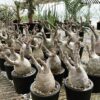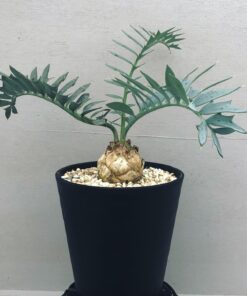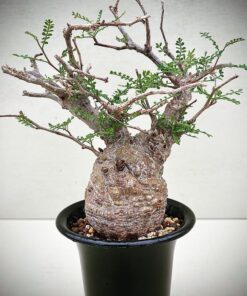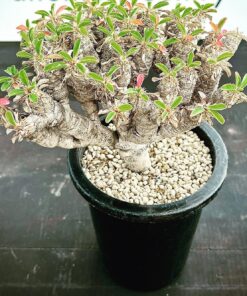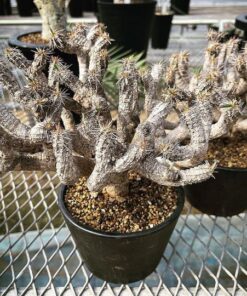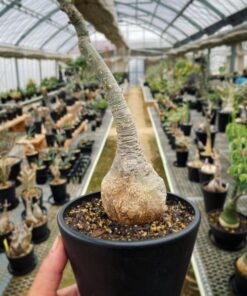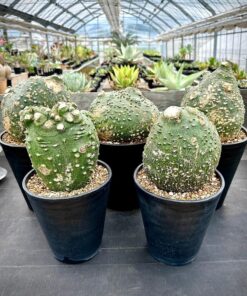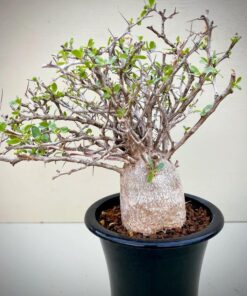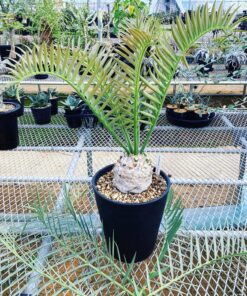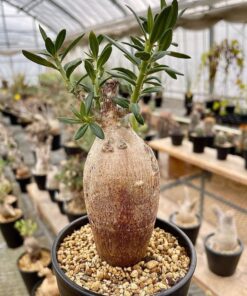Encephalartos Horridus
$120.00
Encephalartos horridus, the Eastern Cape blue cycad, is a small, low-growing cycad up to 0.9 m (3.0 ft) high and 0.9 m (3.0 ft) wide.
Encephalartos horridus, commonly known as the Eastern Cape Blue Cycad or Horrid Blue Cycad, is a distinctive plant species that belongs to the Zamiaceae family. Native to South Africa, this cycad is renowned for its striking blue-grey foliage and its ability to withstand harsh, arid conditions.
The plant features a thick, cylindrical trunk that can grow up to 1.5 meters in height, although some specimens have been known to reach up to 5 meters. The trunk often remains subterranean or partially above ground. The name “horridus” is derived from the Latin word for “bristly”, which aptly describes the plant’s stiff, spiny leaflets. These leaflets are arranged along a central stem to form a rosette of leaves that are a beautiful blue-grey to silver-blue color.
Encephalartos horridus produces male and female cones, with the male cones being slender and elongated, and the female cones being more barrel-shaped. This plant is dioecious, meaning that male and female cones are produced on separate plants.
Due to its unique aesthetic and drought-resistant properties, Encephalartos horridus is a popular choice among gardeners and landscapers, especially in xeriscaping. However, it’s important to note that all parts of the plant are toxic if ingested. Furthermore, the species is considered endangered in the wild due to over-collection and habitat loss, thus it is protected under CITES regulations.
Related products
All Plants
All Plants
All Plants
All Plants
All Plants
All Plants
All Plants
All Plants

